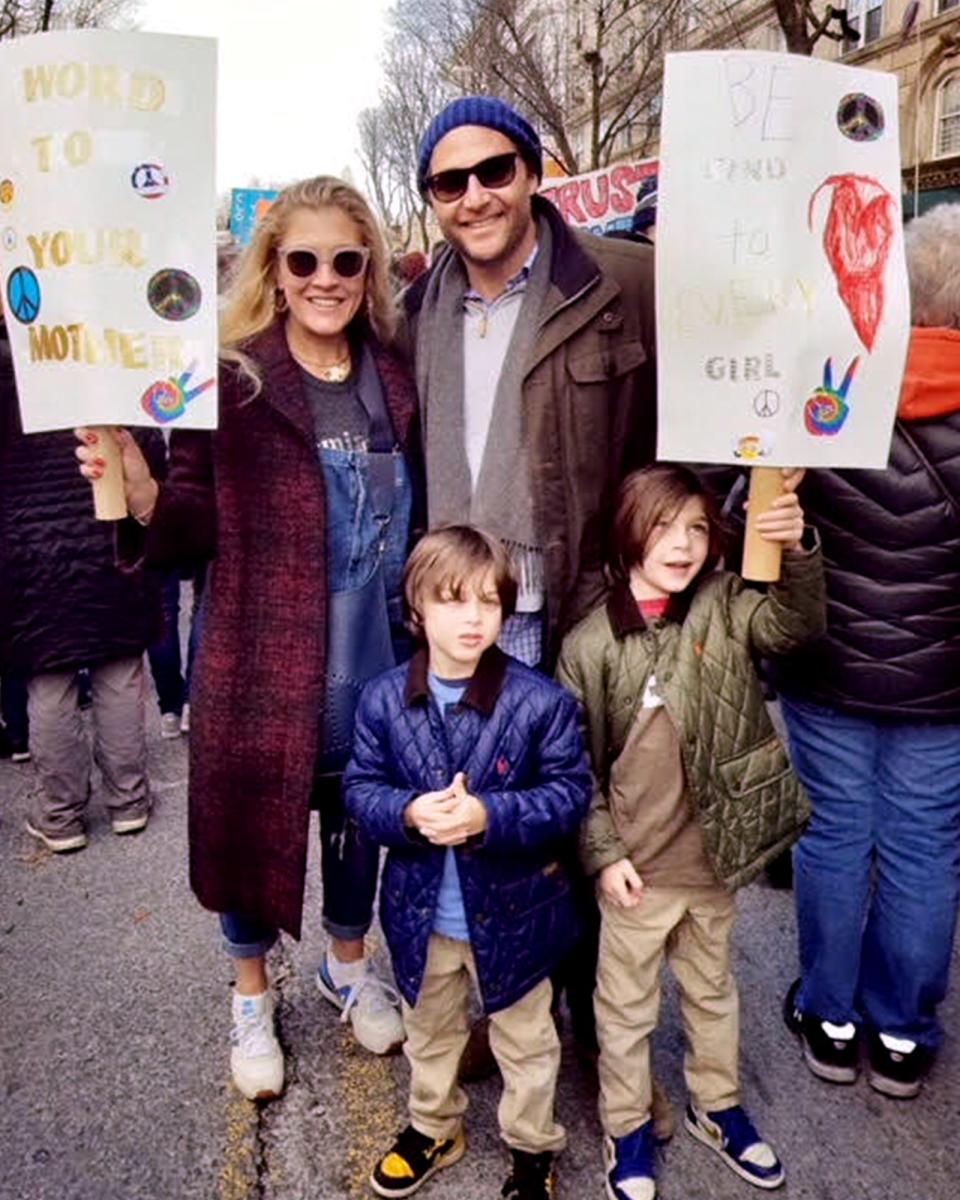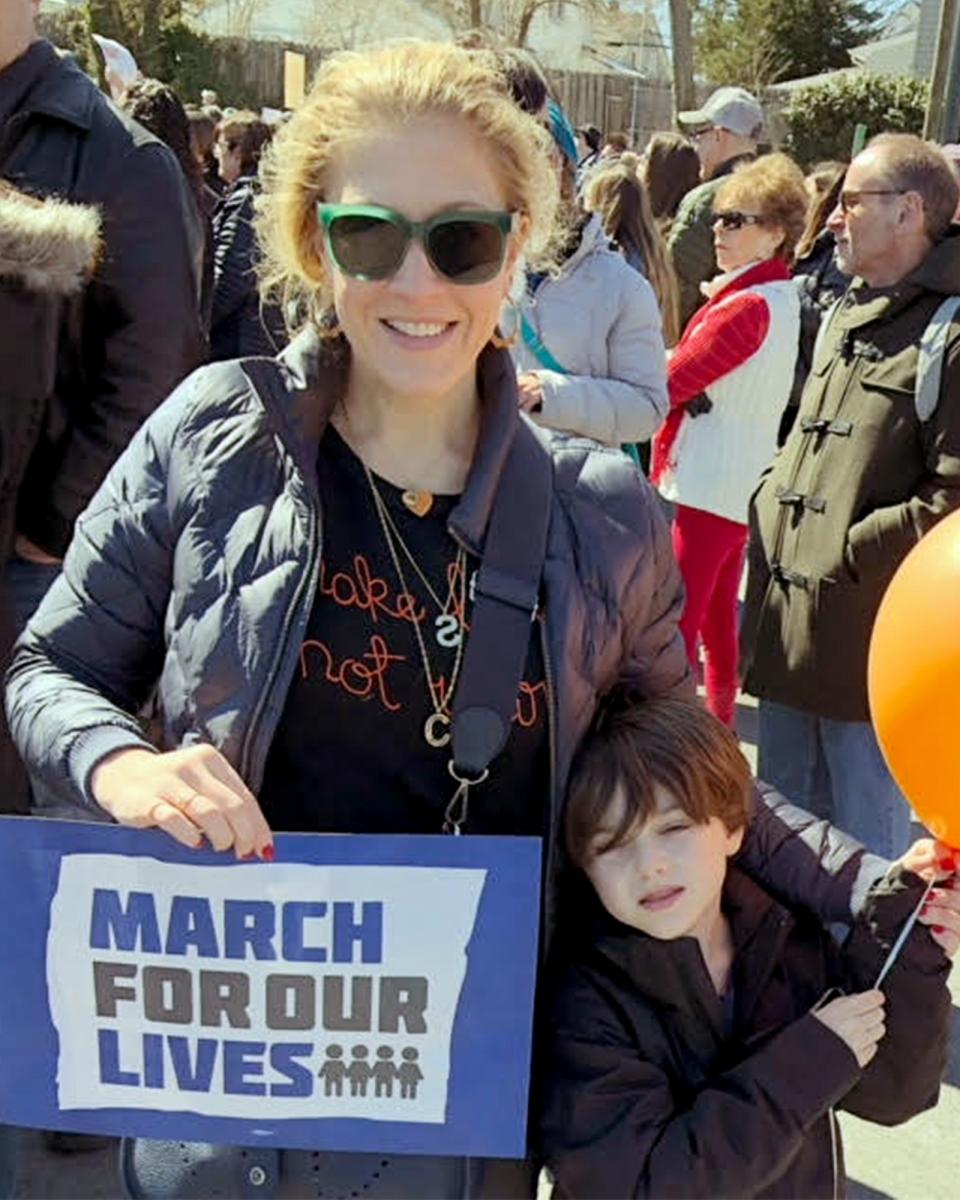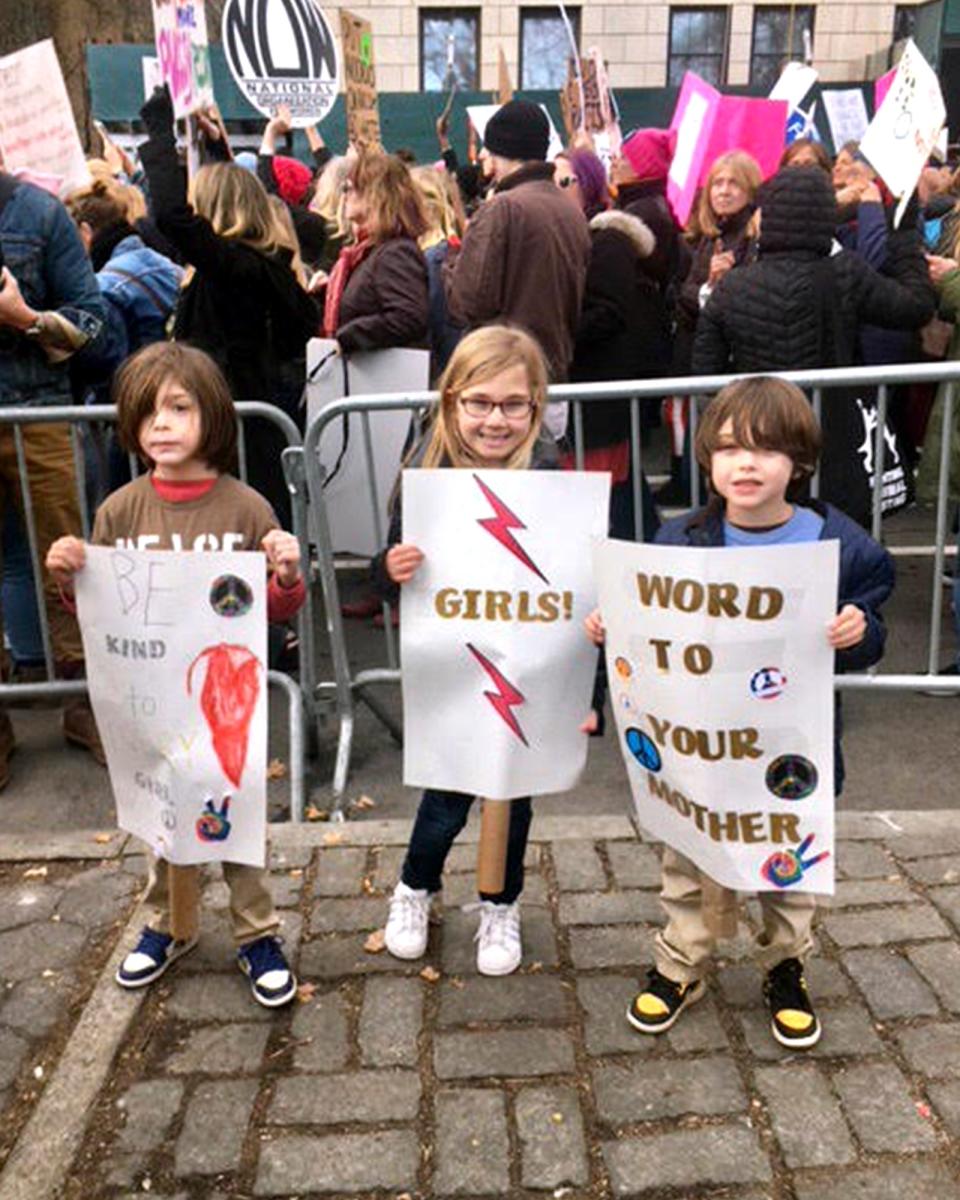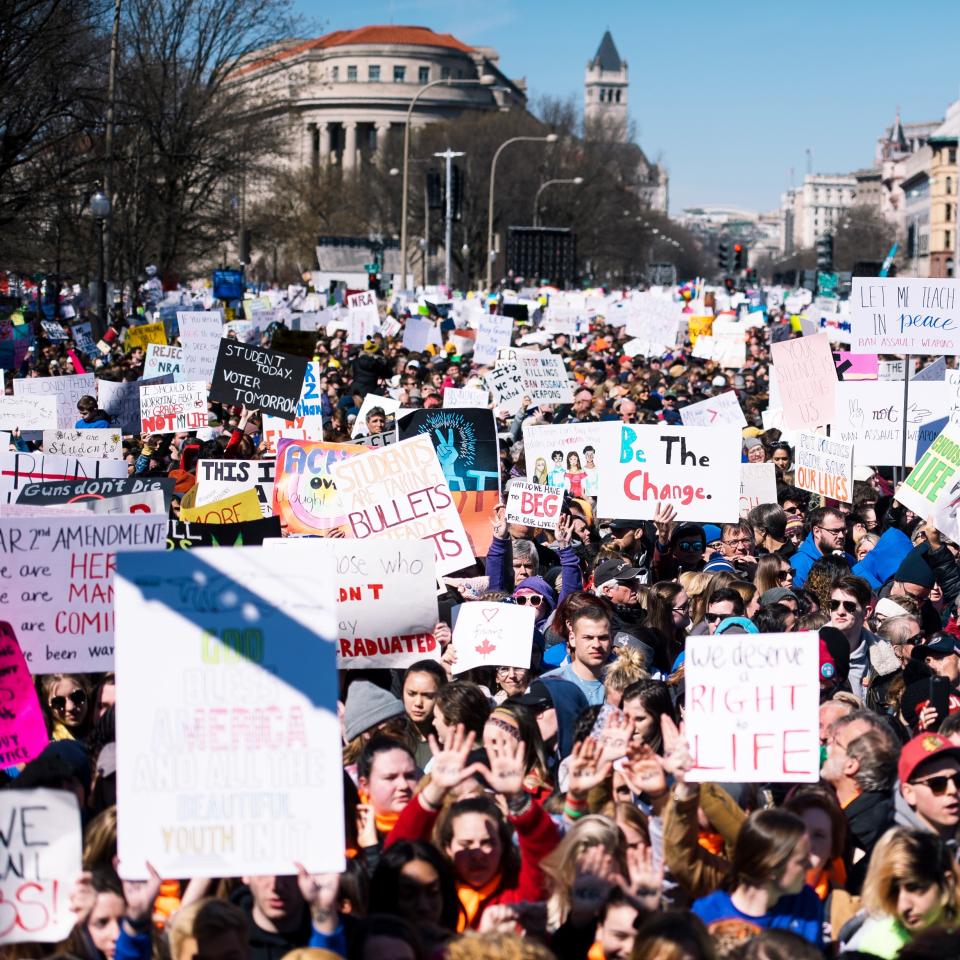As a ‘90s Teen, I Craved a Movement. As a Mom of Two, I Don’t Want It Anymore.
On Saturday, March 24, as I prepared my six-year-old twin boys for their second protest march of the year, it occurred to me: I was finally a part of a movement.
As a teenager, I was obsessed with my dad’s stories of his young adulthood spent challenging The Establishment; his college years devoted to protesting the Vietnam War, shutting down college campuses in the wake of Kent State, and leading marches on Washington in the name of peace and progress.
But, as a high schooler in the early nineties, I couldn’t find my cause. There were cataclysmic events and challenges that defined the decade—the Gulf War and the Oklahoma City bombings were early glimpses at a fragile future, and both the AIDS epidemic and Los Angeles riots proved that social and racial injustice were still prevalent. When I could, I bound myself to the values I believed in. I walked for a cure, and when the Rodney King acquittal was announced over my school's crackling loudspeaker, I got up and walked out.
Still, in my used corduroy bell bottoms, I wanted to be a part of something bigger. I wanted to know what it was like to be part of a generation that stood out, made history, created progress. I was searching for a revolution. But at least in my corner of Westchester, New York, there was neither a generational rallying cry nor a collective sense of urgency.

I knew I would always be involved in something; complacency is not in my wheelhouse. But as life went on and no movement beckoned, I accepted that that my activism would be limited to philanthropic causes and homegrown issues like recycling or composting.
And nowthe movement I once longed for is here, but I'm no longer a teenager romanticizing resistance. I'm a 39-year-old mother of two. The occasional joint has been replaced by a half a clichéd Klonopin before a restless night of postapocalyptic news. The music festivals I attend have VIP tents with sponsored tequila bars. I have a mortgage on a house with an actual white picket fence. My husband and I drive our first-graders to marches and gatherings in a nice station wagon with responsible booster seats. You’re not supposed to be sticking it to the man in Gucci loafers—yet, here I am.
It’s not the antiestablishment aesthetic that I envisioned more than 20 years ago, but while I may not look the part of impassioned activist, I now find myself in the throes of a movement that not only impacts us on a global scale but is directly shaping the way my husband and I guide our children and conduct our family.
It turns out, the resistance is nowhere near as much fun as I thought it would be. Because the stakes are so high. Too high.
I can remember my twin boys, then four years old, bantering about Donald Trump after having seen him on TV in 2016, likening the man to a “giant baby.” My husband and I thought it was hilarious that these children, practically babies themselves, were able to gauge such behavior. We repeated the story again and again, to the delight of family and friends.
I was enamored with the activist lifestyle: the look, the sound, the coolness of it all. Now I feel like I’m paying for my naïveté.
But that was before the Republican nomination, before it seemed possible—even in the realm of reality television—that a man who spoke of and toward women and minorities with such vulgarity could be elected president of the United States. When crowds gathered around the world for the first Women’s March, one of my boys turned to me and said, “Donald Trump is mean to girls.” He was right, and this was no laughing matter.
People who had contempt for those who are different—and by different I mean neither white nor male—were now validated by our President, and my children were listening. I needed to be sure that they could hear the other side, the one with compassion and respect. I needed to be sure those voices were louder than the ones preaching hatred and intolerance.
By January 2018 my sons were proudly standing up alongside their best girlfriend in New York City during the second Women’s March, which felt increasingly pertinent in the wake of #MeToo.

A month later one of my gregarious boys stopped speaking for days.
After some prodding, we learned that he’d heard about the shooting at Marjory Stoneman Douglas High School. Not surprisingly, my first-grader was afraid, overwhelmed, confused, and sad. Again, we marched.
Whether we're marching in our small community or the big city, we've found fortitude and hope in these crowds, and this is inspiring. But the causes we're marching for are nothing I ever expected I'd have to march for when I was a teenager in search of a movement: equality regardless of gender, sexual orientation, or nationality; stricter gun laws so our children aren’t shot at school, at work, or at a concert; a president who respects women. Is this really happening?
My son, Sawyer, spent hours working on his sign for this year’s march in New York. It said “Be Kind to Every Girl”—his choice—and it confirmed our lessons about respect and kindness are having an impact. But last month, as I handed my other son, Crosby, an orange balloon to carry at a local March for Our Lives gathering, the excitement of resistance was gone, replaced by heartache. I don’t want to be fighting for gun control, just as my father didn’t want to be rallying for his friends coming home from Vietnam in body bags.

I see now that my old eagerness to fight for a cause was the result of wanting to find something that would connect me with others. I was enamored with the activist lifestyle: the look, the sound, the coolness of it all. I never really stopped to consider the atrocities, fear, and inequality that spurred the movements to begin with. Now I feel like I’m paying for my naïveté.
I’m deeply humbled and inspired by today’s young activists leading the charge, but I’m also angry. I look at this generation of high school students, and my children, who, despite my wish to slow down time, will inevitably be right behind them, and I feel foolish for wanting what those kids have: a responsibility to fight for their own futures. I wish they didn't have to fight that fight. I no longer want to be a part of a movement. Still, I have to be because my children have to be—and they can’t do it alone.
Despite my attempts at cheerful banter, Crosby barely spoke as we drove to our local March for Our Lives rally. Finally, he turned from the window he'd been staring out of and asked, “Mommy, why are we going to another march?”
I glanced at him in the rearview mirror and told him everything. How Daddy and I want him and his brother to know that their voices matter, that people of all ages—even children—can change the world, that standing up for what they believe in and for others and owning their truth is the only honest path and measure of fulfillment.
Whether it’s a schoolyard bully or one in the Oval Office, I want my sons to know that they always have the power to replace fear and despair with strength and hope. In that moment in the car, I took comfort in the idea that my cause—my movement—is to be the messenger between generations.
Nicole Mann Novick is a New York–based writer. Her work has appeared in Travel + Leisure, InStyle, Los Angeles magazine, MSN, among others. Nicole is also the founder and designer of Garland Collection, a fine jewelry and lifestyle company.


